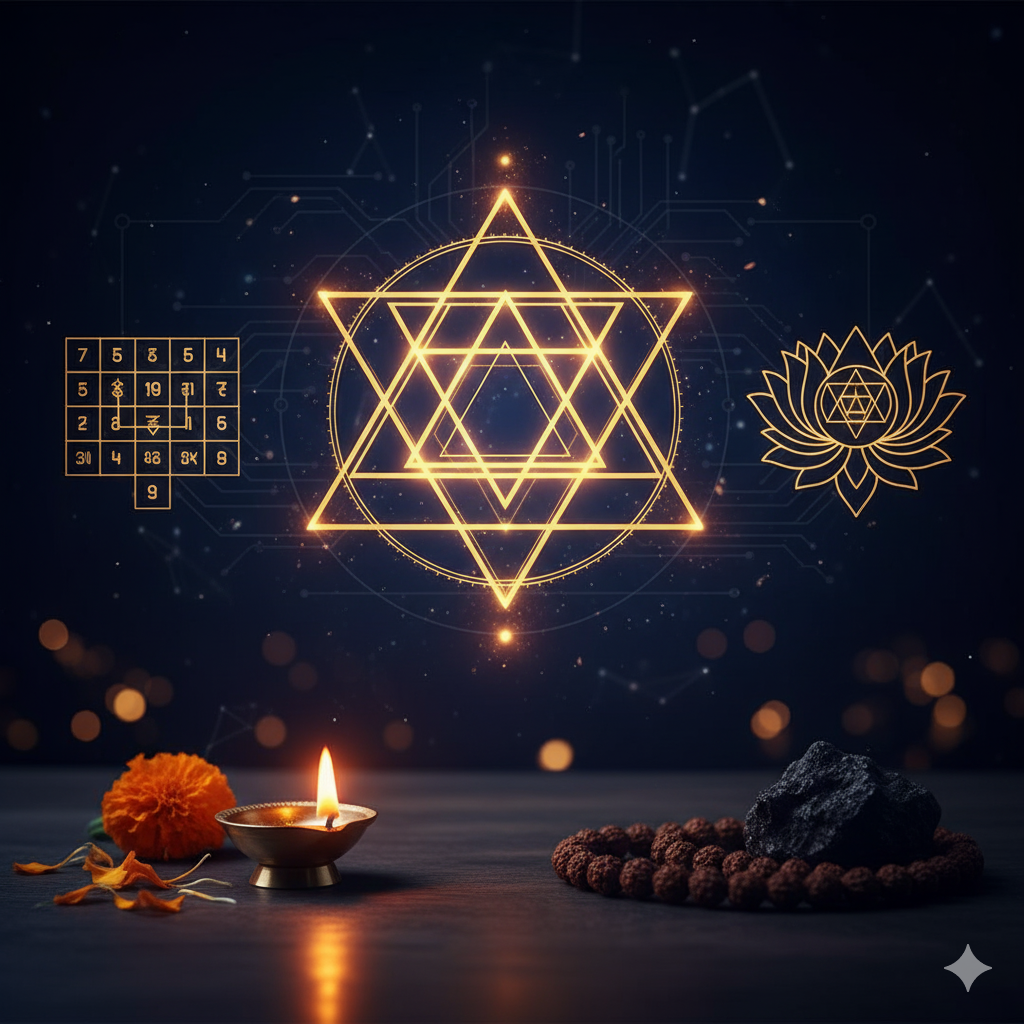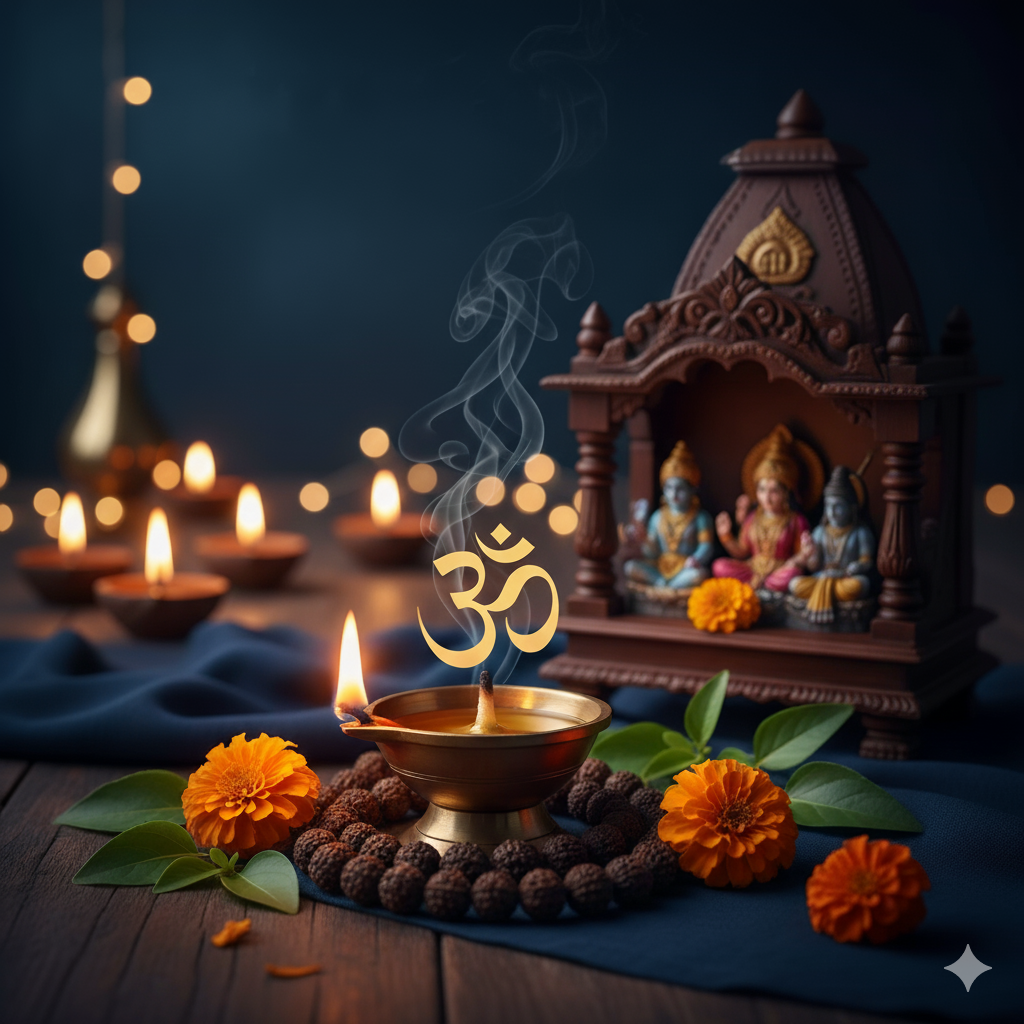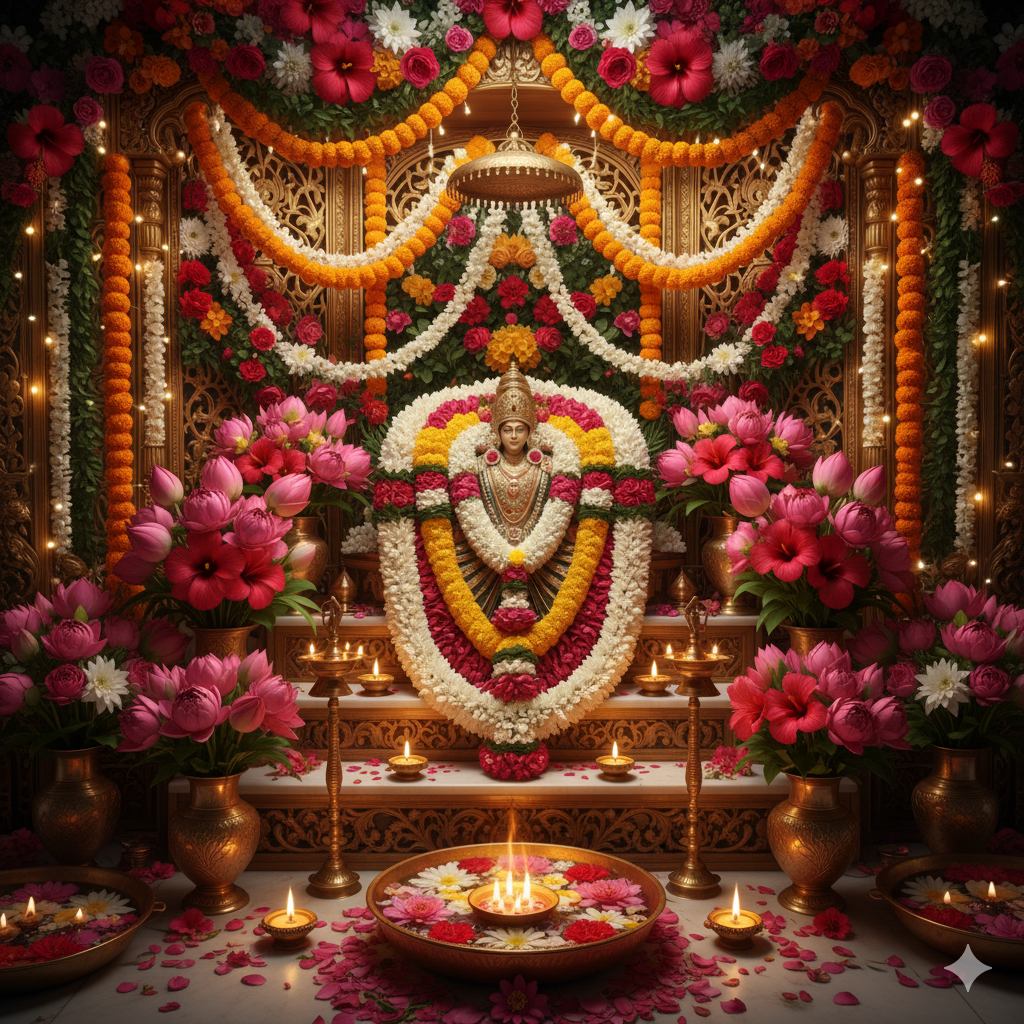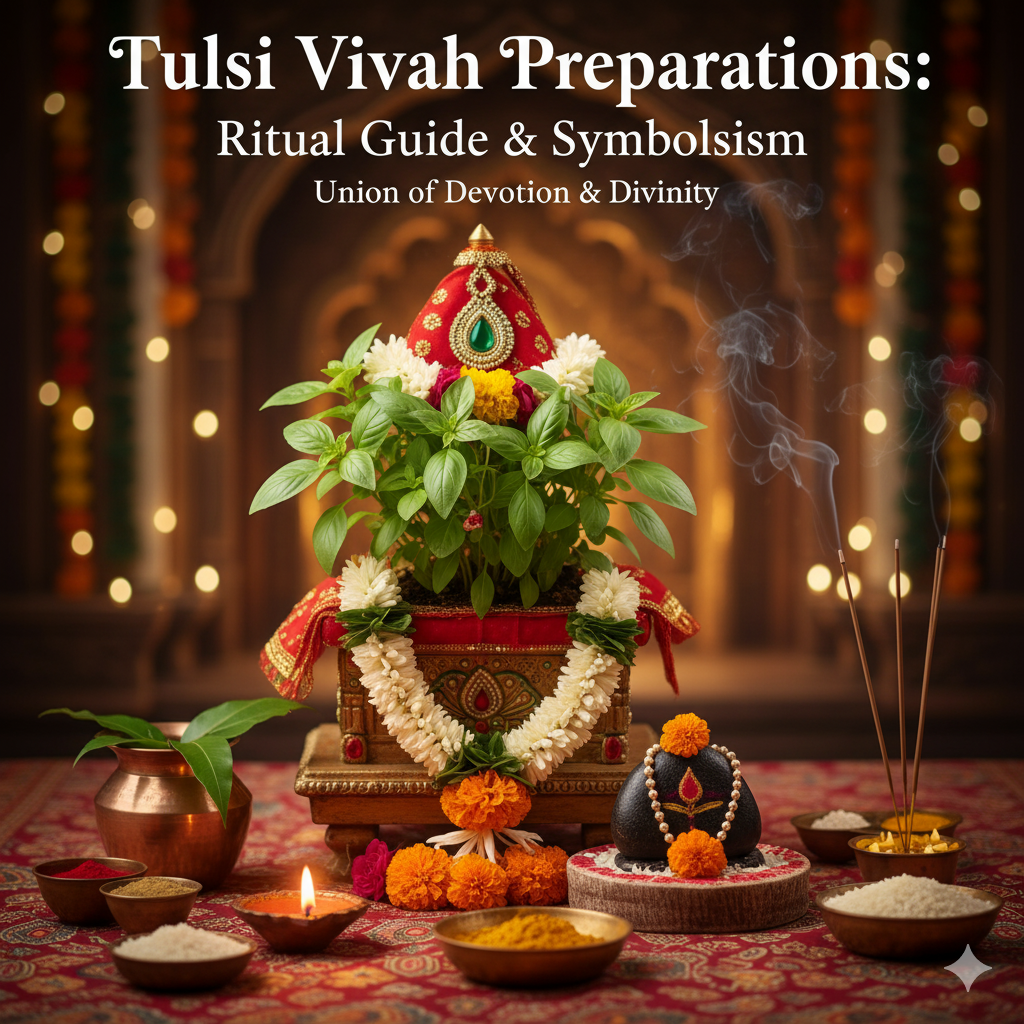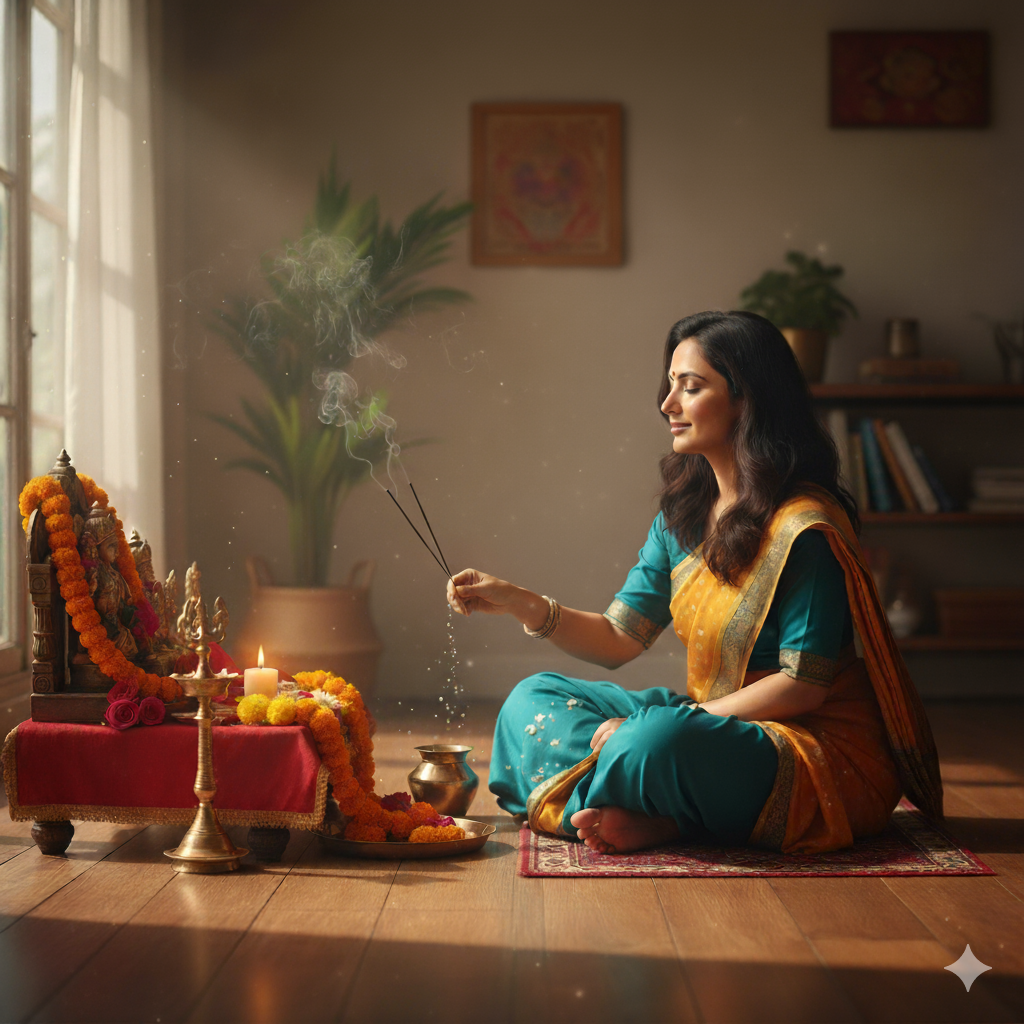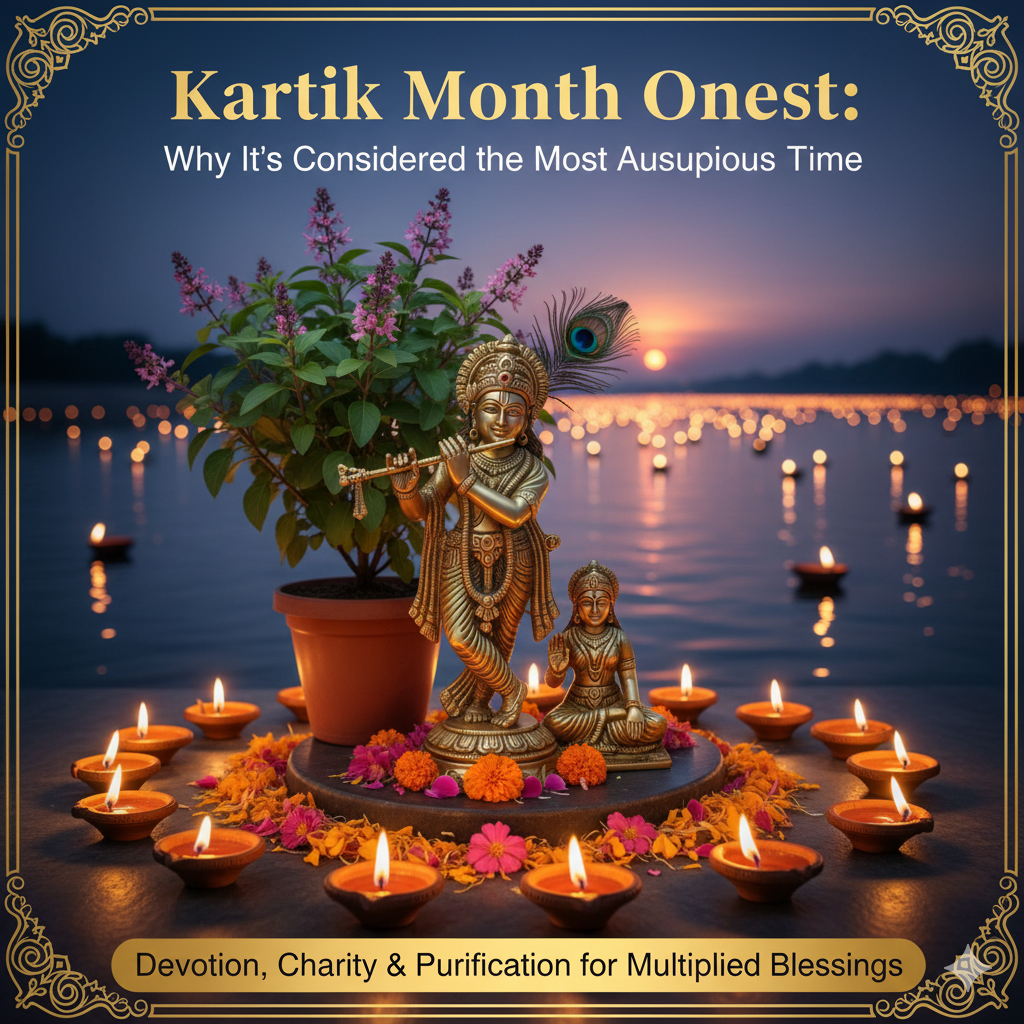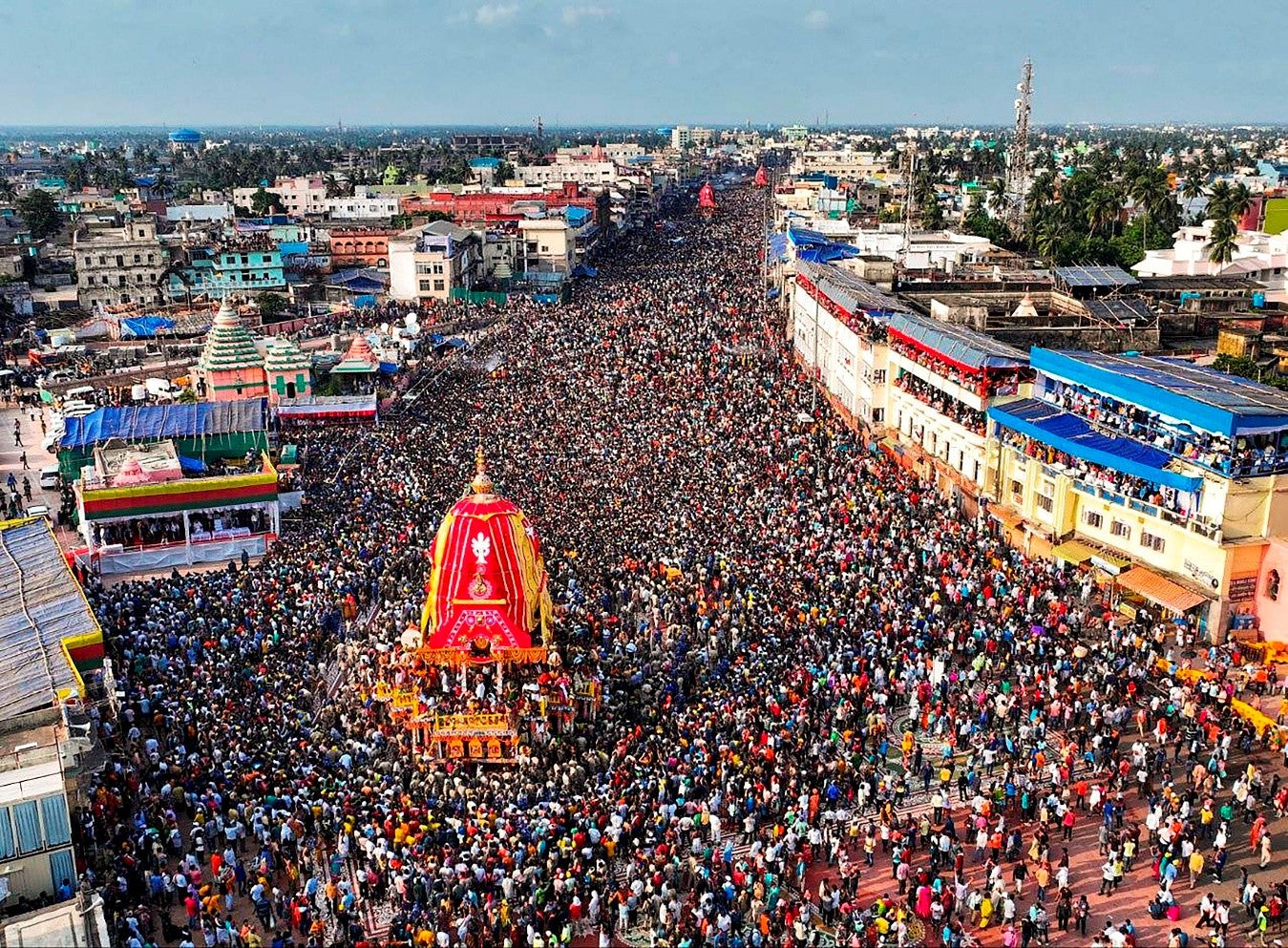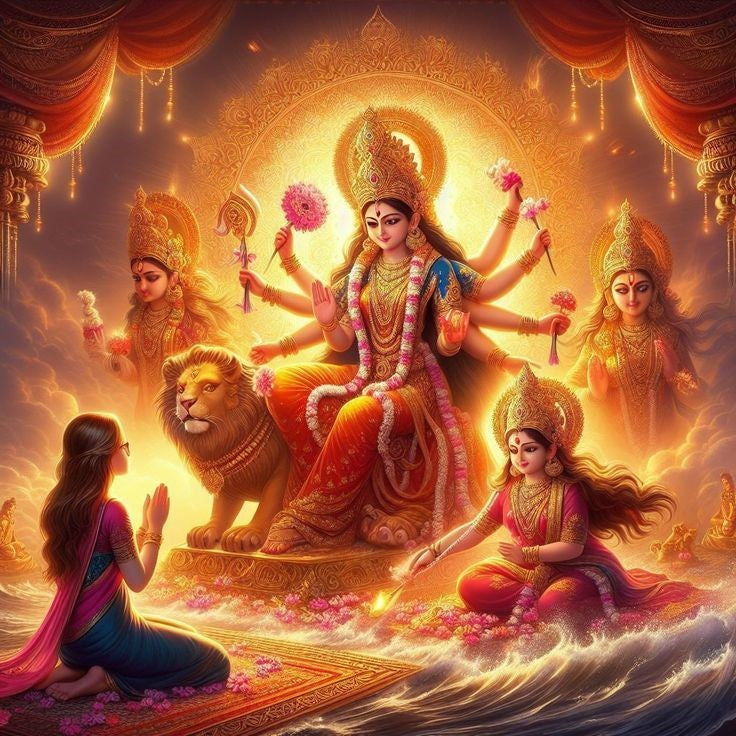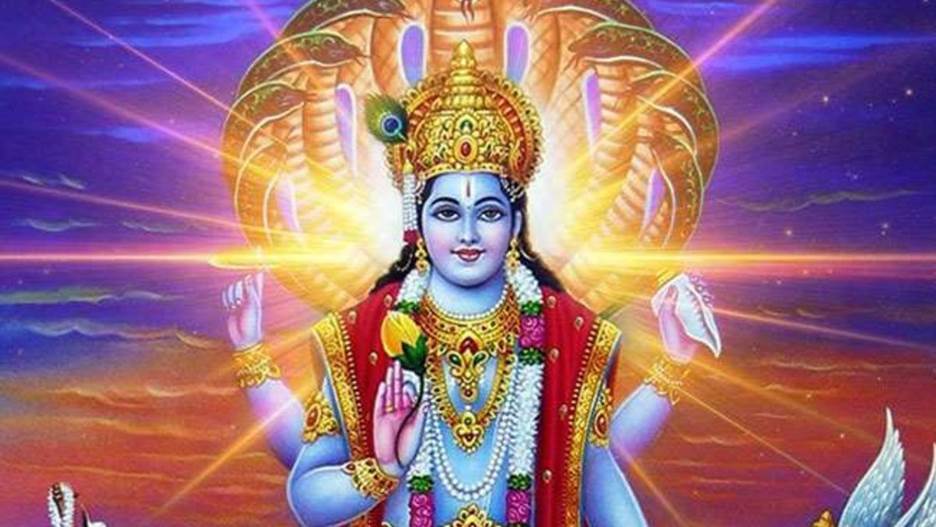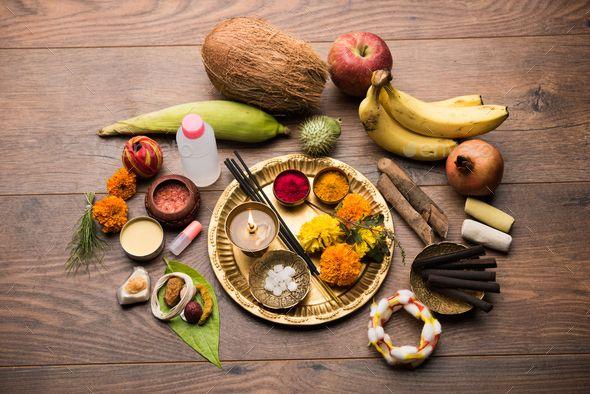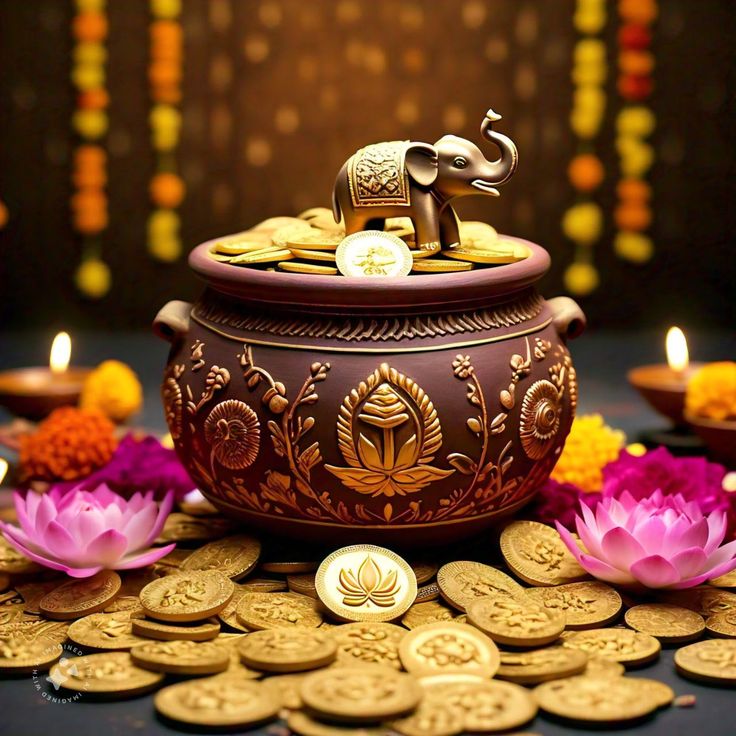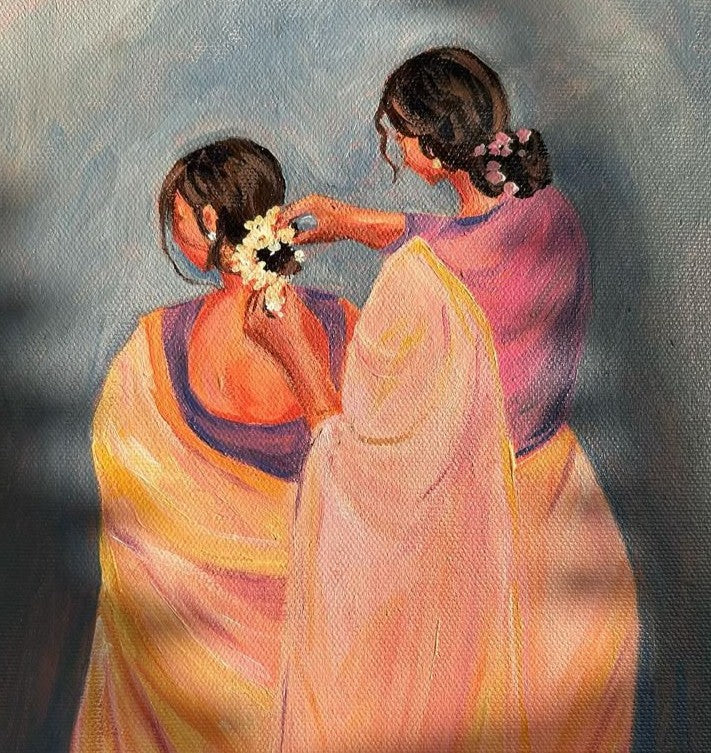Every Diwali night, homes across India are illuminated with rows of diyas, fragrant incense, and chants that echo gratitude. At the center of it all sit Goddess Lakshmi and Lord Ganesha — worshipped together on this auspicious day.
But have you ever wondered why the Goddess of Wealth and the Lord of Wisdom share the same altar on Diwali?
This divine pairing carries profound meaning, combining the essence of material prosperity with spiritual wisdom — reminding us that true abundance is incomplete without awareness, humility, and intellect.
🌸 The Symbolism Behind Worshipping Lakshmi & Ganesha Together
1. Wealth Needs Wisdom
Lakshmi represents dhan (wealth), while Ganesha represents buddhi (intellect).
Without wisdom, wealth can be misused; without prosperity, wisdom may not find grounding. Together, they symbolize balanced abundance — material comfort guided by consciousness.
“Lakshmi brings fortune; Ganesha ensures it’s used wisely.”
2. Lakshmi’s Compassion Meets Ganesha’s Clarity
Goddess Lakshmi is known for bestowing blessings of wealth and harmony. Lord Ganesha clears obstacles — mental, emotional, and circumstantial.
When invoked together, they create a flow of ease, clarity, and grace — the perfect beginning to the new year.
3. A Family Bond in the Divine Realm
In many traditions, Ganesha is regarded as the son of Parvati (Lakshmi’s sister form). Thus, worshipping Lakshmi and Ganesha together symbolizes a family celebration of fortune and purity — just like Diwali itself.
🪔 How the Tradition Originated
According to the Padma Purana, after Lord Vishnu married Goddess Lakshmi, she requested that her blessings always accompany wisdom and righteousness. Ganesha, being the remover of ignorance, became her natural counterpart during worship.
Later, the practice of Lakshmi-Ganesha Puja on Diwali night spread widely — believed to invoke long-lasting prosperity and protect homes from misfortune in the coming year.
🌿 How to Perform Lakshmi-Ganesha Puja at Home
You can perform this sacred ritual simply, with devotion — using essentials available from the Prasadam Collection(all under ₹1,100).
Step-by-Step Puja Ritual
Step 1: Cleanse & Prepare the Altar
-
Wipe your mandir or altar with ganga jal or rose water.
-
Spread a red cloth and arrange the idols of Lakshmi and Ganesha side by side — Lakshmi on the left, Ganesha on the right.
-
Place a Kalash with mango leaves and a coconut behind them.
Step 2: Invoke the Deities
Light a diya with ghee oil and burn Loban or Sandal Dhoop.
Chant:
“Om Shreem Mahalakshmyai Namah”
“Om Gan Ganapataye Namah”
Ring a brass ghanti (bell) three times to clear the aura.
Step 3: Offerings & Prayers
-
Apply kumkum and haldi to both idols.
-
Offer rice, flowers, and sweets.
-
Place one diya in front of each deity — symbolizing your inner light.
-
Close your eyes, express gratitude for the year gone by, and pray for wisdom and wellbeing in the coming one.
Step 4: Aarti & Deepdan
Perform Aarti using a five-wick diya and sing:
“Om Jai Lakshmi Mata”
“Jai Ganesh Jai Ganesh Deva”
Later, light diyas outside your home for Deepdan, symbolizing the removal of darkness from every corner of life.
💫 The Spiritual Message of the Ritual
-
Lakshmi without Ganesha may lead to wealth without direction.
-
Ganesha without Lakshmi brings wisdom but without worldly progress.
Together, they represent balance: a life where outer success and inner peace coexist.
🌼 Practical Tips for Home Worship
-
Use eco clay diyas instead of candles for sustainability.
-
Light diyas facing north or east for best energy flow.
-
Keep idols made of clay, brass, or marble — avoid plastic or glass.
-
After puja, distribute prasadam among family and neighbors.
-
Keep your Lakshmi-Ganesha idols clean and respected year-round — never keep them in cluttered or damp areas.
🌺 The Right Placement of Lakshmi & Ganesha
| Deity | Direction | Symbolic Meaning |
|---|---|---|
| Lakshmi | Left side of altar | Wealth, grace, feminine energy |
| Ganesha | Right side of altar | Wisdom, beginnings, masculine energy |
| Kalash (behind them) | Center | Cosmic source of purity |
| Diya | Front center | Illumination of consciousness |
💡 Pro Tip: Always perform the puja facing north or east, as these directions align with prosperity and knowledge in Vastu Shastra.
🕉️ FAQs
Q1. Can I perform the Lakshmi-Ganesha Puja myself?
Yes! It’s simple — your sincerity matters more than ritual perfection.
Q2. What should I do with old idols from previous years?
Immerse them respectfully in clean water or place under a sacred tree.
Q3. What oil is best for Diwali diyas?
Pure ghee or sesame oil for auspicious, steady flame.
Q4. Can I include Saraswati in the puja?
Yes — some traditions add Saraswati to symbolize knowledge, wealth, and intellect together.
✨ Conclusion
Worshipping Lakshmi and Ganesha together is not just a Diwali tradition — it’s a spiritual principle.
It reminds us that true success isn’t only about riches, but about clarity, kindness, and gratitude.
By lighting a diya before them, you’re igniting both prosperity and wisdom in your life — a perfect harmony for the year ahead.
🪔 Begin your Diwali preparations today:
-
Shop Lakshmi-Ganesha Prasadam Kits & Puja Essentials under ₹1,100
-
Or Book a Puja or Chadhawa to receive temple blessings on Diwali night.
Let this Diwali be your reminder — wealth is divine only when guided by wisdom, and wisdom shines brightest in the light of gratitude. 🌸



